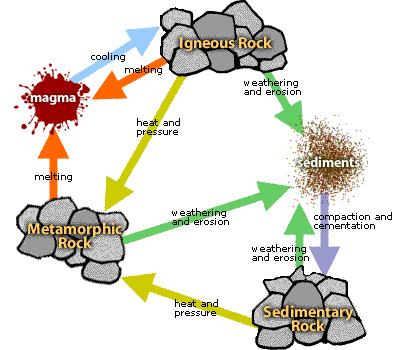Minerals: naturally occurring, inorganic, solid, posses an orderly internal structure of atoms, and have a definite chemical composition.
I. Is a snowflake of a mineral?
Is it naturally occurring? Yes.
Is it inorganic? Yes.
Is it a solid? Yes.
Does it posses an orderly internal structure of atoms? Yes.
Does it have a definite chemical composition? Yes.
Is a snowflake a mineral? YES!
II. Is a pearl a mineral?
Is it naturally occurring? Yes.
Is it inorganic? No.
Is a pearl a mineral? No.
III. Other minerals:



IV. Physical properties of Minerals
Minerals have a crystal form: external expression of the internal arrangement of atoms. (Slow cooling = good form; rapid cooling = poor form)
Luster: appearance of a mineral in reflected light. (Metallic and Nonmetallic- silky, dull, earthy)
Color: least reliable property. Highly variable within minerals due to slight chemical changes.
Streak: color of a mineral in its powdered form; helpful in distinguishing different forms of the same mineral.
Hardness: resistance of a mineral to abrasion or scratching; all minerals are compared to a standard scale; Mohs scale of hardness.
Cleavage: tendency to break along planes of weak bonding; produces flat, shiny surfaces; described by resulting geometric shapes (number of planes, angles between adjacent planes).


